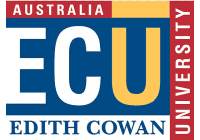Are you looking for a project management approach that emphasises teamwork, adaptability, and iterative progress? Look no further than Scrum. As a framework for managing complex projects, Scrum is gaining popularity not only in Australia but across the globe.
In short, Scrum is an Agile methodology that involves breaking down a project into smaller, more manageable chunks called sprints. During each sprint, a cross-functional team works together to complete a specific set of tasks, allowing for continuous progress and adjustments as needed. Scrum's emphasis on transparency, communication, and flexibility has made it a popular choice for software development projects, but it can be applied to a wide range of industries and projects.
But what makes Scrum stand out from other project management approaches? And how can businesses in Australia benefit from implementing Scrum? In this article, we'll explore the key principles and practices of Scrum, share success stories from Australian businesses, and provide tips for getting started with Scrum in your organisation.
Whether you're a project manager, business owner, or team member, this article will give you a solid understanding of Scrum and its potential for driving successful project outcomes. So, let's dive in and discover the power of Scrum in project management!
Quick Links To Online Project Management Degrees
Edith Cowan University
Graduate Certificate of People in Project Management Online
- 6 months (minimum) part-time
- 3 Units
- $13,020 FEE-HELP available
RMIT Online
Agile For Project Management
- 6 weeks (5-8 hours per week)
- $1,600 incl. GST
- Start Date: 10 Jul 2023
Southern Cross University
Master of Project Management Online
- 2 years part-time
- 12 Units
- Affordable fees, FEE-HELP available
What Is Scrum? Project Management in Australia
Scrum is a technique for the administration of Agile projects that emphasises collaborative teamwork, iterative and incremental software development, and customer input. Its ideas may be used in any kind of project management setting, although its most common application is in the software development industry. Over the past few years, Scrum's reputation as an efficient framework for managing difficult projects has helped it acquire favour in Australia.
The Origins of Scrum
Jeff Sutherland and Ken Schwaber are credited as being the individuals who initially presented the concept of scrum in the 1990s. Both were software developers seeking a more effective method to handle complicated software development projects.
They got their strategy idea from a study by Hirotaka Takeuchi and Ikujiro Nonaka. In it, the authors suggested a "rugby-like" approach to the process of product creation. The importance of cooperation, adaptability, and iterative development was emphasised by this method.
Scrum is an Agile framework for project management that Sutherland and Schwaber established. It was designed with the intention of being applicable to a wide variety of businesses and projects.
They built Scrum on openness, inspection, and adaptability principles as their primary support structures. These pillars guarantee that the team is aware of the progress being made on the project, that they continually analyse the status of the project, and that they adjust as necessary to accomplish the goals of the project.
The word "scrum" derives from the sport of rugby, where it refers to a method for players to restart the game following a stoppage caused by a minor infringement. This is a good example because, in Scrum, the team works together on a project like rugby players work together to advance the ball down the field.
Since it was first introduced, Scrum has rapidly evolved into one of the most well-known Agile frameworks for project management. It is being utilised by businesses all over the world. It is versatile, easily adapted, and able to provide high-quality goods in a timely manner, all of which have contributed to its widespread acceptance.
Scrum has expanded its application outside the realm of software development in recent years and is currently utilised in a variety of other fields, including marketing, finance, and healthcare. It is possible to apply its ideas of cooperation, collaboration, and iterative development to nearly any project, notwithstanding the field in which it is being conducted or the scale of the undertaking.
The Scrum Methodology
The Scrum technique is an Agile framework for project management that places emphasis on teamwork, cooperation with customers, and incremental product development. The foundation of Scrum is the idea that teams should be able to organise themselves and work in short iterations, sometimes known as sprints, to produce tiny, incremental parts of the project.
The Scrum process relies on a number of important roles, artefacts, and events as its foundation. The Product Owner, the Scrum Master, and the Development Team are the roles that are included in this. It is the responsibility of the Product Owner to define and prioritise the project's needs, while it is the duty of the Scrum Master to ensure that the team adheres to Scrum's principles and practises. It is the duty of the Development Team to ensure that the product is delivered in an incremental and iterative fashion.
The Product Backlog, the Sprint Backlog, and the Increment are all artefacts that are used in Scrum. The Product Owner is responsible for defining the project's needs, and they have been compiled into a ranked list that is known as the Product Backlog. The Development Team has committed to delivering a certain portion of the Product Backlog during each sprint, and this subset is known as the Sprint Backlog. At the end of a sprint, the total number of items from the Product Backlog that have been finished constitutes the Increment.
The events that comprise Scrum are as follows: Sprint Planning, Daily Scrum, Sprint Review, and Sprint Retrospective. At the "Sprint Planning" meeting, members of the Development Team and the Product Owner work together to determine the objectives and parameters of the subsequent sprint.
The Daily Scrum is a condensed meeting during which the Development Team reviews their recent accomplishments, obstacles, and their goals for the upcoming day. During the meeting, known as the "Sprint Review," the Development Team will present the Product Owner and any other relevant stakeholders with their finished work. The Sprint Retrospective is a meeting in which the team discusses the most recent iteration of the sprint and looks for ways to enhance its performance.
The Scrum project management approach is meant to be malleable and versatile so that teams can react rapidly to shifting requirements and evolving demands from customers. Because of its emphasis on teamwork, communication, and incremental improvement, Scrum has shown to be an efficient framework for managing complicated projects, particularly in the realm of software development.
Scrum is becoming increasingly well known as an efficient approach for managing projects, notably in the fields of information technology and startup businesses in Australia. Numerous businesses have made the decision to use Scrum as their primary framework for project management. These businesses have also decided to invest in training and certification for their teams to guarantee that their members have the expertise and knowledge required to implement the concepts of Scrum effectively.
Scrum in Project Management in Australia
Within the realm of project management in Australia, Scrum has seen rising levels of adoption, notably within the fields of technology and startup companies. Scrum's emphasis on collaboration, flexibility, and responsiveness appeals to businesses operating in these sectors since these characteristics are ideally suited to the fast-paced and ever-changing nature of the work in these sectors.
There are a number of organisations in Australia that provide Scrum training and certification programmes. These organisations include the Scrum Alliance and Scrum.org, amongst others. Professionals will get the information and skills necessary to effectively apply Scrum's guiding principles and practise to their work by participating in these training programmes.
Scrum has been effectively applied in the project management procedures of a great number of Australian businesses, which has led to increased levels of efficiency, productivity, and happiness among customers. The iterative methodology used in Scrum enables teams to deliver functional software or products more, which in turn helps them to adapt more swiftly to shifting requirements or the shifting demands of customers. This strategy assists businesses in lowering risk, boosting customer happiness, and eventually achieving improved results for the projects they are working on.
Scrum has also been adopted by the government of Australia, with a number of ministries and organisations embracing Scrum as their prefered framework for project management. Scrum has been utilised in many of the projects that have been undertaken by the Digital Transformation Agency of the Australian government. One of these projects was the creation of the myGov platform, which gives citizens of Australia access to online versions of many government services.
Overall, Scrum has demonstrated its efficacy in Australia as a technique for managing projects because it enables teams to successfully engage with one another, adapt rapidly to shifting priorities, and produce high-quality goods and services. Scrum is expected to continue gaining popularity and become an increasingly essential component of project management in Australia as a result of the rising number of businesses and organisations that use it.
Benefits of Scrum in Project Management
1. Increased Efficiency and Productivity
One of the key advantages of using Scrum is that it enables teams to operate in a more effective and efficient manner. Scrum is a project management methodology that assists teams in remaining focused and on track by breaking down the work into smaller, more manageable pieces and defining short-term goals. The consistent check-ins and retrospectives help detect problems and find solutions promptly, which in turn reduces the amount of time lost due to holdups and snags in the project.
Imagine, for instance, that you are working on a project that employs the Scrum methodology. The team organises the project into a series of shorter narratives known as "user stories," each of which describes a feature or capability that the target audience needs.
They then work on the user stories in short iterations called sprints, which typically last between one and two weeks each. The priority of the user stories is determined by the feedback from customers as well as the value to the company. They evaluate their progress at the conclusion of each sprint and make necessary adjustments to their plans for the following sprint.
This strategy guarantees that the team is always focusing their efforts on the most critical tasks and that they are also making progress towards the overarching objective that they have set for themselves. Additionally, it enables them to immediately detect and solve any problems that may come up, such as a change in the requirements of the customers or a technical issue.
2. Improved Collaboration and Communication
Scrum encourages cooperation and communication among members of a team, both of which are necessary for the successful completion of a project. The team members get the opportunity to talk about progress, share their ideas, and voice any issues they may have at the daily stand-up meetings and sprint reviews. This results in the members of the team making better decisions, having more innovative ideas, and having a deeper feeling of ownership and accountability for their work.
Consider the case of a marketing project that makes use of Scrum as an example. Designers, copywriters, people in charge of social media, and people in charge of projects make up the team. They have daily stand-up meetings in which they review their progress, any hurdles they are encountering, and any support they may require. In addition, at the conclusion of each sprint, they have sprint reviews in which they present their work to stakeholders and get feedback from those individuals.
By taking this strategy, you can be certain that everyone is on the same page and is working towards the same objective. It also enables members of the team to discuss their areas of expertise and cooperate on new ideas, which ultimately leads to improved results.
3. Greater Flexibility and Adaptability
Scrum is meant to be flexible and adaptive, which is particularly vital in the fast-shifting corporate world of today. The iterative method gives teams the ability to adjust rapidly to changes in the needs of customers, the conditions of the market, or the requirements of a project.
This makes it possible for teams to alter their priorities and operate more efficiently, ultimately resulting in the delivery of high-quality goods or services that are tailored to the requirements of the clients.
Imagine, for instance, that you are working on a project that utilises Scrum. The team had planned to concentrate their efforts initially on the development of a new feature for the website, but they have received feedback from clients indicating that they are experiencing difficulty with the checkout process.
The group is able to make fast adjustments to its plans and instead concentrate on improving the checkout procedure. This strategy guarantees that the team is continually offering value to the client and satisfying their requirements by addressing their demands.
4. Enhanced Customer Satisfaction
Increased levels of customer satisfaction are the result of the Scrum methodology's emphasis on regularly providing functioning goods or services and inviting consumers to participate in the process.
Customers are able to witness actual outcomes throughout the duration of the project, and their input is included in the subsequent iteration, which helps to ensure that the end product or service satisfies both their requirements and their anticipations.
Take, for instance, the case of a Scrum-based project for the creation of a product. The team holds Regular user feedback meetings, during which they present their work to clients and solicit feedback from those clients.
The team will then take that input and include it in the subsequent version of the product. This strategy guarantees that the end product satisfies the requirements of the clients, which ultimately leads to increased levels of satisfaction on their part.
5. Reduced Risk and Increased Transparency
Scrum is a project management methodology that helps decrease risk by segmenting work into smaller pieces and concentrating on delivering working goods or services more regularly. This method enables teams to recognise possible difficulties early on and devise solutions to them, so reducing the negative impact that any future issues may have on the project's schedule and finances.
The constant contact among the members of the team thanks to the check-ins. The Scrum framework places a strong emphasis on collaboration, with each member of the team being expected to contribute to the accomplishment of the project as a whole.
Daily stand-up meetings foster communication and openness by requiring each member of the team to provide an update on their own progress as well as any possible roadblocks. This helps cultivate a culture of open communication and cooperation, which may result in increased morale among team members and a more upbeat atmosphere at work.
Scrum encourages a concentration on providing value to the client as another one of its primary goals. Scrum is a project management methodology that uses an iterative and incremental approach. At the conclusion of each sprint, the team is expected to deliver potentially shippable portions of the product.
This indicates that the consumer may begin using the product and give feedback on it early on in the process of its creation rather than having to wait until the very end of the process. This not only increases the level of happiness that customers have, but it also helps to lower the likelihood that the project will fail.
Challenges in Implementing Scrum in Australia
In spite of the fact that Scrum has been demonstrated to be efficient in enhancing project management procedures, there are still a number of obstacles that businesses may encounter while attempting to apply it in Australia. The following are some of the most significant obstacles:
- Resistance to change: One of the most significant challenges of Scrum implementation is the resistance to change. Many employees may be used to traditional project management approaches and may be hesitant to adopt a new methodology. Overcoming resistance to change requires effective communication and training to help employees understand the benefits of Scrum and how it can improve project outcomes.
- Lack of experience and knowledge: Another challenge in implementing Scrum in Australia is the lack of experience and knowledge in the methodology. Scrum requires a different approach to project management, and many organisations may not have the necessary skills and experience to implement it successfully. This can lead to a lack of understanding of Scrum and difficulty in adapting to its principles.
- Lack of support from senior management: Successful Scrum implementation requires buy-in and support from senior management. If senior management is not fully committed to the methodology, it can be challenging to implement it effectively. This can lead to a lack of resources and support, making it difficult for Scrum teams to operate effectively.
- Difficulty in defining roles and responsibilities: Scrum emphasises self-organising teams and flexible roles, which can sometimes lead to confusion over responsibilities. This can be particularly challenging in larger organisations where multiple teams may work on different projects. Defining clear roles and responsibilities is essential to ensure that everyone understands their role and can work effectively together.
- Lack of metrics and measurement: Scrum focuses on delivering customer value, and it can be challenging to measure the success of Scrum implementation. Without clear metrics and measurements, it can be challenging to evaluate the effectiveness of the methodology and make improvements where necessary.
- Cultural differences: Australia is a culturally diverse country, and different cultures may have different approaches to project management. For example, some cultures may emphasise hierarchy and authority more, while others may value more collaborative approaches. Understanding cultural differences and adapting Scrum principles accordingly can be critical to successful implementation.
- Integration with existing systems and processes: Many organisations in Australia have existing systems and processes in place, and integrating Scrum with these can be challenging. Effective implementation requires carefully considering how Scrum integrates with existing tools, workflows, and processes.
- Scalability: Scrum has proven effective in managing small to medium-sized projects, but scalability can be an issue for larger projects or organisations. Scaling Scrum requires careful planning and consideration of the additional resources and processes needed to support larger teams and projects.
- Lack of transparency: Scrum emphasises transparency and frequent communication, which can be challenging in some organisations. If there is a lack of transparency, it can be difficult to identify and address issues that arise during the project. This can lead to delays, missed deadlines, and other problems.
For organisations in Australia to successfully overcome these hurdles, they will need to invest in training, education, and coaching to assist teams in effectively adopting and implementing Scrum.
Additionally, organisations have to define their objectives, KPIs, and procedures to evaluate their performance level and make adjustments as required. Additionally, in order to ensure the effective application of Scrum in project management, it is vital to build a culture of cooperation and open communication.
Conclusion
Scrum is an extensively used project management technique and is growing in popularity in Australia because of its efficacy in raising productivity, enhancing team cooperation, and producing high-quality outcomes.
In conclusion, Scrum is a system for managing projects that is gaining popularity in Australia. Scrum is great for organisations of all sizes and sectors trying to streamline their project management processes and produce better results. This is because Scrum strongly emphasises flexibility, transparency, and continuous development.
Are you interested in finding a method of project management that will enable you to boost productivity and cooperation while producing high-quality results? Think about introducing Scrum into your business as soon as possible!
Content Summary
- As a framework for managing complex projects, Scrum is gaining popularity not only in Australia but across the globe.
- Scrum's emphasis on transparency, communication, and flexibility has made it a popular choice for software development projects, but it can be applied to a wide range of industries and projects.
- Scrum is a technique for the administration of Agile projects that emphasises collaborative teamwork, iterative and incremental software development, and customer input.
- It was designed with the intention of being applicable to a wide variety of businesses and projects.
- They built Scrum on openness, inspection, and adaptability principles as their primary support structures.
- Since it was first introduced, Scrum has rapidly evolved into one of the most well-known Agile frameworks for project management.
- It is being utilised by businesses all over the world.
- Scrum has expanded its application outside the realm of software development in recent years and is currently utilised in a variety of other fields, including marketing, finance, and healthcare.
- It is possible to apply its ideas of cooperation, collaboration, and iterative development to nearly any project, notwithstanding the field in which it is being conducted or the scale of the undertaking.
- The Scrum technique is an Agile framework for project management that places emphasis on teamwork, cooperation with customers, and incremental product development.
- The Scrum project management approach is meant to be malleable and versatile so that teams can react rapidly to shifting requirements and evolving demands from customers.
- Because of its emphasis on teamwork, communication, and incremental improvement, Scrum has shown to be an efficient framework for managing complicated projects, particularly in the realm of software development.
- Scrum is becoming increasingly well known as an efficient approach for managing projects, notably in the fields of information technology and startup businesses in Australia.
- Within the realm of project management in Australia, Scrum has seen rising levels of adoption, notably within the fields of technology and startup companies.
- Participating in these training programmes will give professionals the information and skills necessary to effectively apply Scrum's guiding principles and practice to their work.
- Scrum has been effectively applied in the project management procedures of a great number of Australian businesses, which has led to increased levels of efficiency, productivity, and happiness among customers.
- Scrum has also been adopted by the government of Australia, with a number of ministries and organisations embracing Scrum as their prefered framework for project management.
- Scrum has been utilised in many of the projects that the Digital Transformation Agency of the Australian government has undertaken.
- Overall, Scrum has demonstrated its efficacy in Australia as a technique for managing projects because it enables teams to successfully engage with one another, adapt rapidly to shifting priorities, and produce high-quality goods and services.
- Scrum is expected to continue gaining popularity and become an increasingly essential component of project management in Australia as a result of the rising number of businesses and organisations that use it.
- The priority of the user stories is determined by the feedback from customers as well as the value to the company.
- Scrum is meant to be flexible and adaptive, which is particularly vital in the fast-shifting corporate world of today.
- The iterative method gives teams the ability to adjust rapidly to changes in the needs of customers, the conditions of the market, or the requirements of a project.
- This makes it possible for teams to alter their priorities and operate more efficiently, ultimately delivering high-quality goods or services tailored to the client's requirements.
- Increased levels of customer satisfaction are the result of the Scrum methodology's emphasis on regularly providing functioning goods or services and inviting consumers to participate in the process.
- This strategy guarantees that the end product satisfies the client's requirements, which ultimately leads to increased satisfaction on their part.
- Scrum is a project management methodology that helps decrease risk by segmenting work into smaller pieces and concentrating on delivering working goods or services more regularly.
- Daily stand-up meetings foster communication and openness by requiring each member of the team to provide an update on their own progress as well as any possible roadblocks.
- This helps cultivate a culture of open communication and cooperation, which may result in increased morale among team members and a more upbeat atmosphere at work.
- Scrum is a project management methodology that uses an iterative and incremental approach.
- In spite of the fact that Scrum has been demonstrated to be efficient in enhancing project management procedures, there are still a number of obstacles that businesses may encounter while attempting to apply it in Australia.
- Another challenge in implementing Scrum in Australia is the lack of experience and knowledge in the methodology.
- Scrum emphasises self-organising teams and flexible roles, which can sometimes lead to confusion over responsibilities.
- Defining clear roles and responsibilities is essential to ensure that everyone understands their role and can work effectively together.
- Scrum focuses on delivering customer value, and it can be challenging to measure the success of Scrum implementation.
- Understanding cultural differences and adapting Scrum principles accordingly can be critical to successful implementation.
- Many organisations in Australia have existing systems and processes in place, and integrating Scrum with these can be challenging.
- Effective implementation requires carefully considering how Scrum integrates with existing tools, workflows, and processes.
- Scrum emphasises transparency and frequent communication, which can be challenging in some organisations.
- If there is a lack of transparency, it can be difficult to identify and address issues that arise during the project.
- Additionally, in order to ensure the effective application of Scrum in project management, it is vital to build a culture of cooperation and open communication.
- Scrum is a project management technique that is extensively used and is growing in popularity in Australia because to its efficacy in raising productivity, enhancing team cooperation, and producing high-quality outcomes.
- In conclusion, Scrum is a system for managing projects that is gaining popularity in Australia.
- Scrum is great for organisations of all sizes and sectors trying to streamline their project management processes and produce better results.
- This is because Scrum strongly emphasises flexibility, transparency, and continuous
FAQs About Project Management
Scrum is an Agile framework for project management that focuses on teamwork, customer collaboration, and iterative development.
Scrum offers several benefits for project management, including improved efficiency, enhanced team collaboration, better quality of deliverables, and faster time-to-market.
Scrum is implemented in various ways in Australia, depending on the industry and project scope. Many companies adopt Scrum as their primary project management methodology and invest in training and certification for their teams.
Challenges in implementing Scrum in Australia include resistance to change, lack of training and experience, and communication breakdowns.
Companies can address these challenges through effective change management, communication, and education. Investing in training and certification and providing the necessary tools and infrastructure can also help overcome these challenges.





